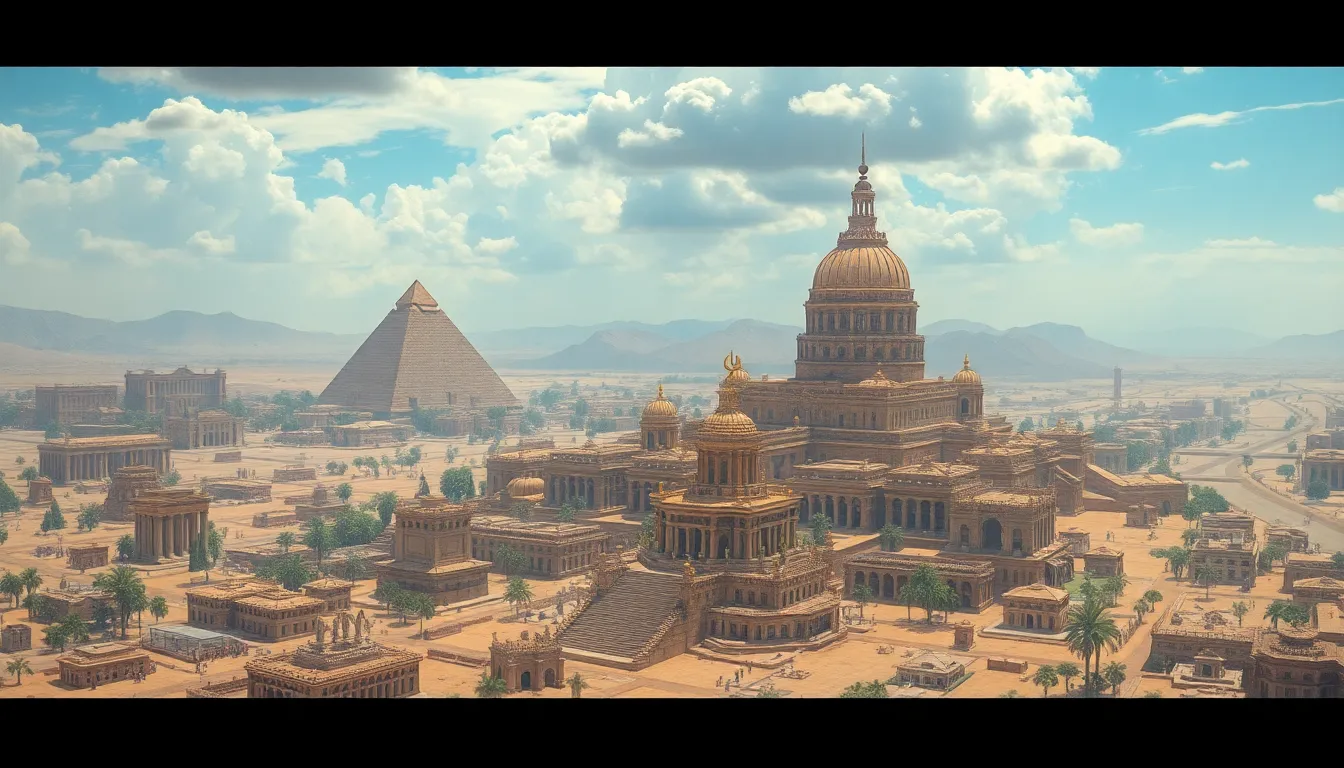The Mythical Geography of the City of Heliopolis
I. Introduction
Heliopolis, known in ancient Egyptian as Iunu, was one of the most significant cities in ancient Egypt, revered as a center of sun worship and mythology. This ancient city not only served as a religious hub but also played a crucial role in shaping Egyptian culture and cosmology. The mythical geography of Heliopolis, characterized by its sacred landscapes and associations with powerful deities, offers profound insights into the beliefs and values of ancient Egyptians.
The purpose of this article is to explore the unique geographical, historical, and mythological aspects of Heliopolis, shedding light on its importance within the broader context of Egyptian mythology.
II. Historical Context of Heliopolis
Founded over 5,000 years ago, Heliopolis emerged as a significant political and religious center in ancient Egypt. Its importance can be traced back to the Early Dynastic Period, where it was closely associated with the worship of the sun god Ra.
Key deities associated with Heliopolis include:
- Ra: The primary solar deity, often depicted as a falcon-headed man.
- Atum: The creator god who emerged from the primordial waters.
- Nut: The sky goddess, often represented as arching over the earth.
Heliopolis played a vital role in Egyptian mythology, particularly in creation myths, where it was considered the birthplace of the sun and other significant gods.
III. The Landscape of Heliopolis
The physical geography of Heliopolis was characterized by its proximity to the Nile River, which served not only as a source of life but also as a divine symbol. The river’s annual flooding provided fertile soil, allowing the city to thrive agriculturally.
Some key elements of the landscape include:
- The Nile River: Central to the city’s existence, symbolizing fertility and life.
- Sacred Groves: Areas dedicated to worship and rituals, often filled with sycamore trees.
- The Sunlit Horizon: The landscape’s orientation towards the east symbolized rebirth and renewal.
The symbolic elements of the landscape, such as the sun’s rise over the horizon, were integral to the mythology surrounding creation and the cycle of life.
IV. The Solar Theology of Heliopolis
Heliopolis was primarily known for its solar theology, with the sun god Ra at its center. Temples and monuments dedicated to solar worship were constructed to honor Ra and facilitate the rituals associated with his worship.
Significant structures included:
- The Temple of Ra: A central place of worship that housed the sacred rituals.
- Obelisks: Tall, four-sided monuments that symbolized the rays of the sun.
Myths surrounding creation and the sun’s journey were deeply embedded in Heliopolitan theology. One popular myth describes how Ra created the world and its inhabitants through his spoken word and how he traversed the sky in his solar boat, bringing light to the earth.
V. Mythical Creatures and Beings Associated with Heliopolis
Heliopolis was home to various mythical creatures and beings that played important roles in local lore. These beings often symbolized elements of nature or represented specific divine powers.
Some notable mythical creatures include:
- Serpopard: A mythical creature with the body of a leopard and the neck of a serpent, symbolizing duality.
- Apep: The chaotic serpent that embodied darkness and was an enemy of Ra.
The significance of these creatures extended beyond mythology; they were often depicted in art and literature, representing the struggles between order and chaos, light and darkness.
VI. Heliopolis in Egyptian Cosmology
In Egyptian cosmology, Heliopolis held a central role in the creation myth. According to the Heliopolitan creation story, Atum emerged from the primordial waters of Nun and created the first gods, setting in motion the creation of the world.
Cosmological symbols found in Heliopolis include:
- The Ogdoad: A group of eight primordial deities representing chaos and creation.
- The Benben Stone: A sacred stone representing the mound that emerged from the waters of chaos, symbolizing the birthplace of the sun.
The Benben stone was particularly significant, as it was believed to be the point where creation began and was often housed within temples dedicated to Ra.
VII. Legacy and Influence of Heliopolis
Heliopolis’ influence extended far beyond its borders, impacting later Egyptian history and mythology. Even after its decline, the religious practices and beliefs established in Heliopolis continued to shape Egyptian culture.
Furthermore, Heliopolis influenced neighboring cultures and religions, particularly during the Hellenistic period, where its deities were syncretized with Greek gods.
Archaeological discoveries in Heliopolis have provided significant insights into ancient Egyptian civilization, including:
- Temple ruins: Remnants of structures dedicated to solar worship.
- Artifacts: Statues, inscriptions, and everyday items that illuminate the life and beliefs of ancient Egyptians.
VIII. Conclusion
The mythical geography of Heliopolis reveals a rich tapestry of belief, culture, and history that is intrinsic to understanding ancient Egyptian civilization. From its sacred landscapes to its powerful deities, Heliopolis serves as a testament to the importance of mythology in the lives of the ancient Egyptians.
As we reflect on the enduring legacy of Heliopolis, it becomes clear that the myths and stories that emerged from this ancient city continue to resonate in modern culture, reminding us of the profound connections between geography, mythology, and human experience.
In conclusion, the study of Heliopolis not only enriches our understanding of ancient civilizations but also highlights the timeless nature of human curiosity and reverence for the divine.




